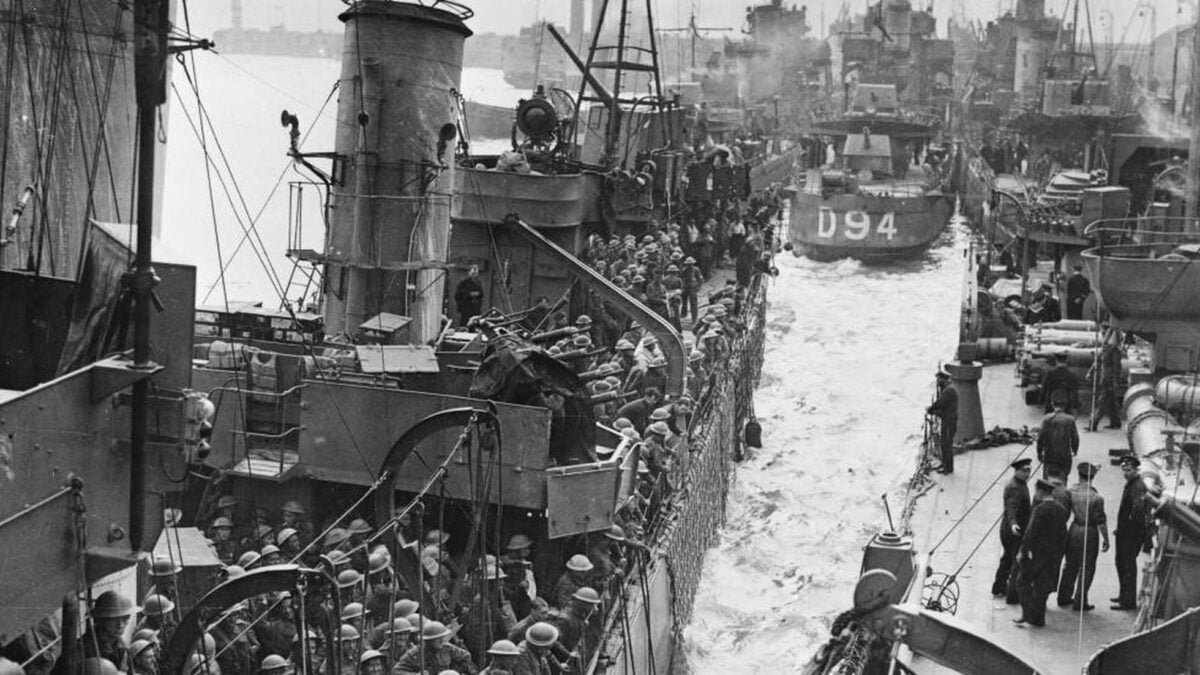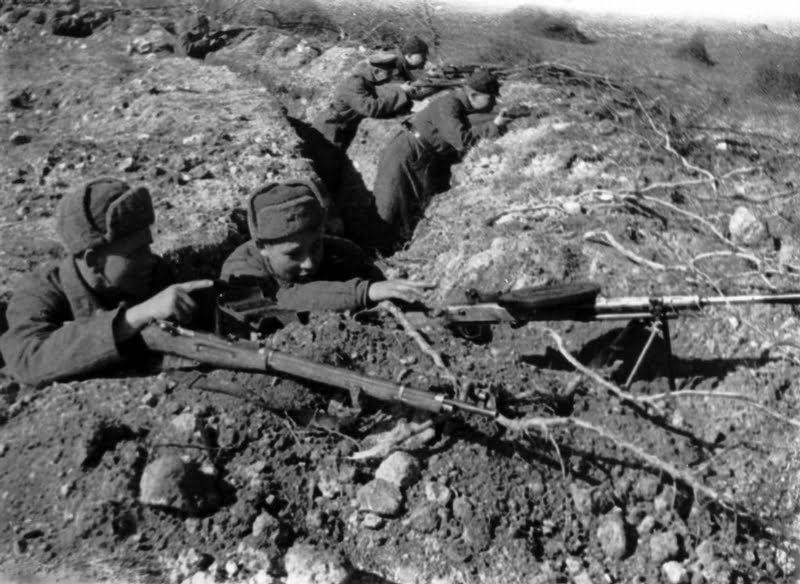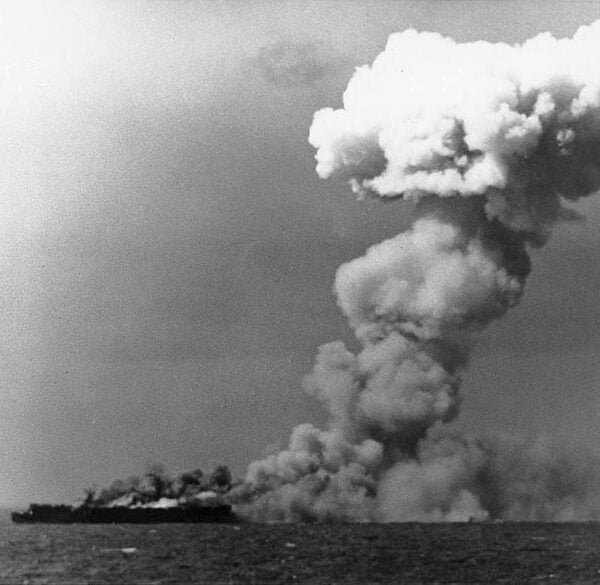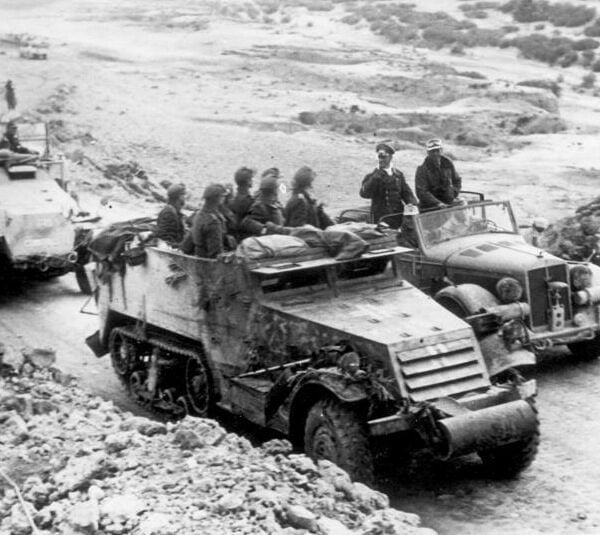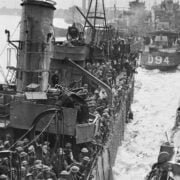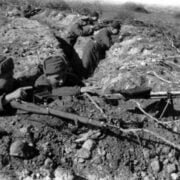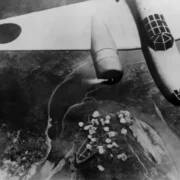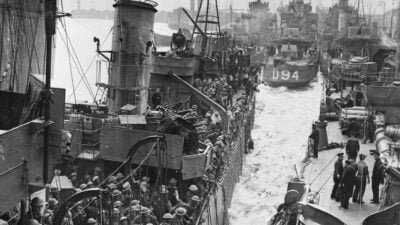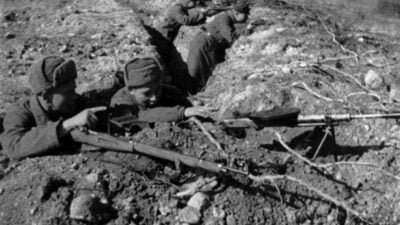In the history of war, there are moments that transcend pure military strategy and delve into the realm of cunning and ingenuity. Operation Mincemeat is one of those fascinating chapters where the human mind became a weapon as powerful as any physical arsenal. Let’s unravel the intricate details of this intriguing espionage game that not only challenged the conventions of war but also redefined the role of military intelligence.
Also check out: The Capture of Monte Castello
The Intriguing Game of Espionage
World War II witnessed numerous secret operations, but one stands out as a masterpiece of deception. Conceived in the darkest corridors of British intelligence, this operation aimed not only to gather information but actively manipulate the enemy’s perception. In a conflict where every strategic move was calculated, the Operation stood out as a work of art in deception.


The essence of this operation was the creation of a convincingly fictitious identity. British agents, true masters of fiction, brought to life the character of “Major Martin.” This fictitious Royal Navy officer did not exist, but his existence was crucial for the operation’s success. Creating not just a name and a rank but a complete life story required an exceptional level of creativity and attention to detail.
Creating a Fictitious Identity
At the heart of Operation Mincemeat was the extraordinary ability to create a fictitious identity that transcended suspicion. The masterminds behind this audacious plan not only invented an officer but breathed life into a complete persona, complete with a history, connections, and personality.
Major Martin, the central figure in this ruse, was not just a name on paper. He was a fictitious Royal Navy officer whose existence was meticulously fabricated. Every detail of his rank, career, and even the most intimate details of his personal life was imagined and documented in a way that created a coherent and believable narrative. This wasn’t just a matter of forging a name; it was a work of fiction intertwined with reality.
The complexity of creating Major involved the coordination of various intelligence agencies. From MI5 to MI6, each piece of this puzzle had to fit perfectly. The minds behind this plan were not just strategists; they were character creators, sculpting a figure that would fit seamlessly into the theater of World War II.
Creating the Character of Operation Mincemeat
The choice of Martin as a Royal Navy officer was not random. British agents understood the need for the character to fit into the operational context and enemy expectations. Thus, Major Martin was cleverly positioned as a naval officer who could have crucial information about the Allies’ plans and strategies. Creating a figure that seemed essential to the war effort was a stroke of genius.
But the creation of Major did not stop at the lines of military career. His personal life was equally elaborate. Letters were drafted to fictitious “relatives,” describing events and emotions that never happened. A sentimental narrative was woven into the plot, adding a layer of humanity to the fictitious character. It was as if Major Martin wasn’t just a cog in the war machine but a human being with relationships, feelings, and commitments.
The Choice of the “Perfect Corpse”: A Crucial Decision for Operation Mincemeat
At the heart of Operation Mincemeat, the choice of the “perfect corpse” proved to be one of the most intricate and crucial elements for the success of the ruse. It wasn’t just about finding an available body; it was the meticulous selection of an individual whose characteristics would harmoniously coincide with the carefully crafted persona of Major Martin.


Glyndwr Michael, a deceased beggar, was the deliberate choice to embody Major Martin. British agents understood that the operation’s credibility depended not only on the narrative but also on the appearance and circumstances of the fictitious character’s death. Thus, Michael was transformed from a marginalized figure in society into the focal point of one of the most audacious intelligence operations in history.
Glyndwr’s apparent age played a crucial role in the selection. It was vital that his body matched the expected age range of a serving military officer. The decision to use an older man who appeared to be in his thirties reflected the meticulous care to ensure that no compromising details drew attention. The body had to fit seamlessly into Major Martin’s fictitious story.
Circumstances of Death
Beyond age, Michael’s death circumstances were forged to reinforce the narrative. The idea of an accidental drowning while carrying secret documents on his person was not only tragic but also plausible enough to avoid intense questioning. The choice of the mode of death not only contributed to the credibility of the story but also influenced the emotional reaction expected from the Axis upon discovering the body.
The selection of a “perfect corpse” was not just a matter of physical appearance but also ensuring that the body was not easily identifiable. Glyndwr Michael, as a man without identification documents and without close family ties, provided an additional layer of anonymity. This was crucial to avoid any in-depth investigation that could unravel the plot.
The Fake Documents: A Convincing Narrative
In the intricate fabric of the Operation, the creation of fake documents emerged as a meticulous and crucial art. Every piece of paper, every carefully chosen word, was not just a puzzle piece; it was the construction of a narrative that should withstand the most meticulous scrutiny. The fake documents were the glue that bound the parts of the ruse together, giving Major Martin’s fictitious persona a persuasive authenticity.


The personal letters written by Major Martin were more than mere correspondences; they were windows into his supposed life, revealing intimate and emotional details. The ability to create correspondences that transcended the trivial, touching emotional fibers, was an essential component to humanize Major in the eyes of any potential investigator. Every word was a careful stroke, creating an image of a real officer with friendships, concerns, and connections.
The produced photographs to support the narrative were forged works of art aimed at conveying authenticity. Every pose, every detail of the scenery, was a thoughtful consideration to ensure that the images told Major Martin’s visual story in a credible manner. The choice of the moments captured sought to reinforce the image of an active man engaged in his military service, contributing to the construction of the persona that strategists wanted to project.
The Lover’s Note
One of the most intriguing touches of this deception was the lover’s note included in Martin’s fictitious belongings. This subtle addition not only added an element of drama to the narrative but also drew a more complete and human portrait of the fictitious character. The choice to include such a detail revealed the depth of psychological understanding behind the operation, exploring not just military strategy but also the nuances of personal relationships.
Every fake document, from military orders to personal correspondences, was crafted for a specific purpose: to persuade the enemy of the authenticity of Major Martin’s story. The ability to anticipate possible doubts and address them through these documents revealed the mastery of British agents in the art of deception.
The Location of Action: Neutral Spain and Its Fundamental Role
The strategic choice of neutral Spain as the setting for Mincemeat was a masterful move that added a layer of complexity and opportunity to the plot. While many theaters of operations were physical battlefields, Spain became a battleground of the mind, where the subtleties of diplomacy and espionage could be explored to the fullest.


Spanish neutrality, though initially seeming like uninteresting terrain, was, in reality, a strategically valuable playing field. Both the Allies and the Axis had interests and a presence in the region, turning Spain into fertile ground for the game of influence. The country, under the leadership of Generalissimo Francisco Franco, was politically delicate and, therefore, susceptible to clever manipulations.
Spain represented a bridge between the two conflicting worlds, providing a unique platform for the dissemination of false information. Through diplomatic channels and strategic contacts, British agents had the opportunity to subtly introduce elements of Major Martin’s fictitious story into the flow of World War II information. The stage was set for the plot to unfold amidst the shadows of Spanish neutrality.
A Cauldron of Opportunities for Operation Mincemeat
The presence of military attaches, spies, and diplomats from both factions on Spanish soil created a cauldron of possibilities. It was a playing field where lies could blend with truths almost imperceptibly. British strategists understood that by choosing Spain, they would not only have access to crucial information but could also direct the flow of information to favor their strategic interests.
The role of Spanish authorities cannot be underestimated. The operation depended, in part, on the acceptance or, at the very least, non-interference of local authorities in dealing with Major Martin’s body and documents. The ability to discreetly negotiate and influence key figures within the Spanish government was a demonstration of the mastery of British agents in managing such an intricate operation.
The choice of neutral Spain, in the end, was a key piece in Operation Mincemeat. The delicate political environment, the strategic presence of key figures, and the opportunities for misinformation dissemination made Spain the perfect stage for this ruse.
The Axis Reaction: How Disinformation Shaped Decisions
The Axis’s response to the ingenious plot of the Operation was a crucial piece of the puzzle, revealing the effectiveness of disinformation as a psychological weapon in war. The spread of false information about Allied plans for an imminent attack on Southern Europe had a profound impact on Axis strategies and decisions.


The minds behind Mincemeat understood the psychology of the enemy and the importance of exploiting vulnerabilities in the chain of command. By feeding the Axis credible details about a supposed Allied invasion plan, British strategists subtly manipulated the perceptions and priorities of the German command.
The dissemination of disinformation not only influenced the allocation of resources and troops but also triggered a chain reaction that echoed throughout the Axis war machine. Changes in the strategic positions of German forces were a testament to the effectiveness of misinformation in creating confusion and uncertainty among enemy ranks.
Reinforcing the Enemy’s Side
Southern Europe, highlighted as a potential target in the fictitious narrative, became the focus of Axis attention. German troops were moved to reinforce defenses in that region, while other strategically more vital areas temporarily remained unprotected. This redirection of resources and efforts demonstrated how carefully planted disinformation could influence not only perception but also tangible actions on the battlefield.
The Operation was not just a psychological trick; it was a strategic move that altered the course of the war without firing a single bullet. The Axis, unaware of the plot, fell into the trap of disinformation, changing their tactics based on data that was pure fiction. The result was a window of opportunity for the Allies, who managed to advance on other fronts without encountering the expected resistance.
The Axis’s reaction to Mincemeat highlights the unique ability of psychological warfare to shape not only perceptions but also strategic decisions. Disinformation, when applied masterfully, becomes a formidable tool in the art of war, influencing the enemy in ways that go beyond the physical battlefield.
The Legacy of Operation Mincemeat: A Historic Achievement
The closure of the Operation not only marked the end of a clever plot; it represented the birth of a historic achievement that transcends the conventional limits of war. The lasting legacy of this operation was shaped by the intricate threads of deception and the mastery of strategists who used the human mind as the most formidable of weapons.


Mincemeat left an indelible impression on military history, establishing itself as a supreme example of creativity and audacity in military intelligence. The genius behind the deception, the creation of fictitious personas, and psychological manipulation showed that war is not limited to physical confrontation but is also a field where the mind plays a decisive role.
Disinformation as Strategy
One of the most important legacies was the validation of disinformation as a strategic tool. British strategists, by influencing Axis decisions with false information, opened a new front in psychological warfare. The understanding that manipulating the enemy’s perceptions could be as effective as direct military superiority left a deep mark on the theory and practice of military intelligence.
The Operation also inspired future approaches to psychological warfare and deception strategies. The lessons learned from this extraordinary episode were incorporated into the mental arsenals of intelligence agencies around the world. The creativity and audacity demonstrated by British strategists became a model for future secret operations, influencing how conflicts were planned and executed.
A Milestone in History
Beyond the military scope, it remains a captivating narrative for historians and war enthusiasts. The historic feat is not limited to tactical success; it extends to the essence of humanity itself, revealing how much creativity and cleverness can influence events that change the course of history.
When contemplating the legacy of the Operation, we are reminded that, in times of war, the mind is truly a powerful weapon. The operation not only altered the course of World War II but also challenged the conventions of what is possible to achieve through intelligence and strategy. Operation Mincemeat remains a lasting testimony to the human ability to transcend conventional limits, leaving an indelible mark on the complex tapestry of military history.
Legacy of Operation Mincemeat
As we conclude our detailed examination of Operation Mincemeat, it is evident that this operation transcends the conventional narrative of war. The genius behind the deception and the precise execution of this stratagem make it a fascinating story that continues to captivate the imagination of those interested in the art of war and the complexity of the espionage game. Operation Mincemeat remains a testament to human creativity in times of conflict, where the mind becomes the most formidable of weapons.

